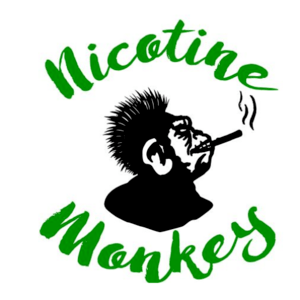To understand the smoking problem one needs to understand smokers. And the way to do this is to talk to them.
Two of the questions I ask all smokers who come to see me for help in quitting are, ‘At what age, and why, did you start?’
The vast majority say they started in their teens or early twenties and were influenced by other smokers – usually their friends or parents. Some add they wanted to smoke because they thought it presented a cool image or would make them appear grown-up. A few mention other reasons: the belief it would help relieve stress, or they were influenced by cigarette advertisements, or for experimentation, or to show rebelliousness.
Invariably, to my next question of what they remembered the first cigarette was like, they say it was unpleasant or horrible – it made them cough or they felt dizzy.
But what reasons, if they can think of any, do regular smokers give for continuing to smoke? They may say they enjoy it, it’s a habit, helps them to take a break, relieves stress, enhances the pleasure of eating and drinking, and abolishes unhappiness.
This is also part of the problem. These purported reasons may be taken at their face value: the pleasure of smoking (or vaping), the benefits smokers derive from their habit. Thence the concept of the need to replace smoking with something that it’s hoped will be safer, or to find a less dangerous alternative that mimics the hand-to-mouth actions of smoking and the sensation of smoke being drawn down the throat, and so on.
The ideas are based on misinformation and illusions. Are people who don’t smoke missing something? I think not. But it requires a little further analysis to understand why this is, which is what virtually all other smoking cessation advisors seem unable to do.
This is the missing piece of the puzzle. The point has been well made Robert Proctor (see https://www.nicotinemonkey.com/whats-the-harm-in-smoking-harm-reduction) that smokers dislike smoking and wish they didn’t have to do it, and that nicotine is not a recreational drug.
Once this is understood, it will be clear that the only reason smokers smoke is because of their perceived inability to quit.
Keeping these points in mind, let’s now consider moves to regulate new tobacco products such as e-cigarettes.
A global survey of approaches to this matter appeared in the July 2017 edition of the scholarly journal Tobacco Control to which I am indebted for the following information about e-cigarettes:
Regulations vary widely. They are non-existent in some countries while others ban their sale; some impose age restrictions of between 18 to 21 years for their legal purchase; their use in enclosed public spaces may be banned in the same way as ordinary cigarettes; advertising and promotion may be restricted; the concentration of nicotine in the e-liquid may be limited and health warning labels may be mandated, and so on. The type of regulation seems to depend on whether e-cigarettes are regarded as medicines, tobacco products, or consumer products. (Paraphrased.)
Confusion all round – except in those countries that ban the sale of e-cigarettes such as Argentina and Australia.
The burning question, however, is this: what is the point of all this regulation (where it exists)?
Since nicotine has no recognised medical use, e-cigarettes cannot be regarded as medicines. How about consumer products? It seems they are by default coming to be regarded under that heading – you can pick up your weekly vape supplies from your friendly local vape shop, no questions asked as long as you look over eighteen. Tobacco products then? That is indeed what they are: the nicotine in e-liquids is derived from tobacco. (We’ll exclude from this discussion non-nicotine e-cigarettes.)
The distinction between burnt and non-burnt tobacco products is arbitrary, although some people argue that there’s a fundamental difference, believing that nicotine itself is probably harmless. This may be so in the case of medicinal nicotine (medicinal in the curious sense of treatment for nicotine addiction acquired through smoking) of which there are already several formulations: patches, gum, inhalators, lozenges, nasal sprays, etc.
Therefore, it’s an indulgence to smokers and a tacit collusion with them, that because e-cigarettes can be presented as mimicking some of the behaviours and effects of smoking – the ‘throat hit’, hand-to-mouth gestures, the plume of vapour, etc., – they’re lauded as being in a different category from medicinal nicotine.
But whereas the effects of medicinal nicotine are largely benign (apart from skin irritation from the patches and jaw ache from the chewing gum) it’s no more than a fond hope that e-cigarettes are harmless. Only time will tell.
Under these circumstances, in the meantime they should be considered as the tobacco products they are, and regulated in the same way.
So now the question can be re-phrased: what’s the point of regulating tobacco products?
Age restrictions in the UK are meant to protect youngsters from starting to smoke before they reach 18. They’re unenforceable, of course. This is shown by the alarming statement that, ‘Tens of thousands of children take up the deadly addiction (smoking) every year.’ (Source: ASH Daily News, 2 July 2017.)
But if we suppose that age restrictions do work and no one tries smoking before the legal age, would there overall be fewer smokers? Probably. But if this indeed turns out to be the case, in our hypothetical totally law-abiding society, if young people only start smoking when they’re allowed to, there would still be a huge number of smokers.
And why only protect the young? What about older people – don’t they count?
In order to bring clarity to the debate about the smoking problem, I propose the following changes:
- Nicotine replacement therapy (NRT) means neither that nicotine is being replaced with something, nor is it a replacement for anything except cigarettes. Therefore, for semantic reasons the term NRT should be dropped and instead it should be referred to as medicinal nicotine or nicotine maintenance therapy.
- Just as people who are not alcoholics or heroin addicts are not referred to as non-heroin addicts (or users) or non-alcoholics, respectively, people who do not smoke should henceforth not be referred to as non-smokers, but as normal people.
- The word ‘smoker’ should be replaced in public discourse with the term ‘nicotine addict’.
Likewise, those who use e-cigarettes should also be known for what they are: nicotine addicts.
Then we can have a more sensible debate about regulating the addictive drug nicotine.
Text © Gabriel Symonds


Leave A Comment